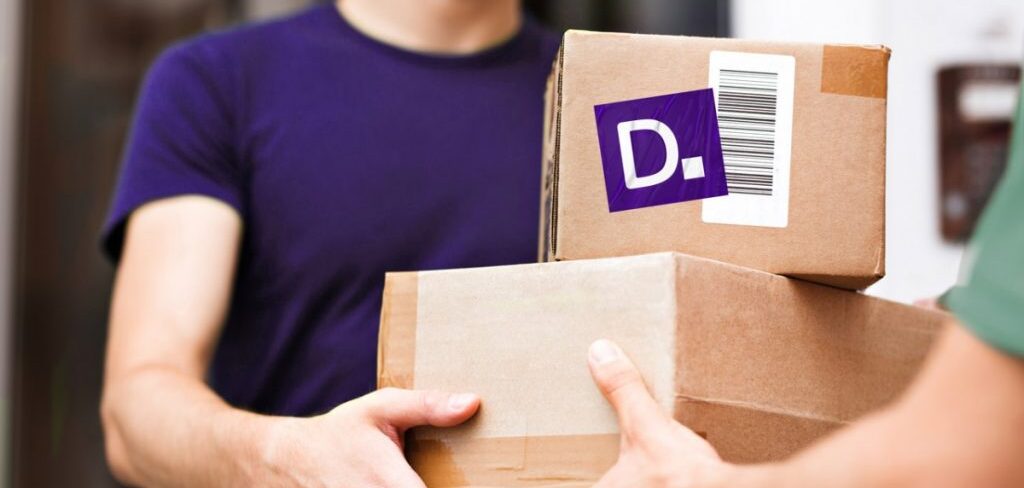In many ways, home delivery is a luxury-level experience. Whatever you want from the infinite aisle of the internet is delivered to your door for a nominal fee. However, it’s also incredibly inefficient, with lots of small drops to many addresses, a large percentage of which require redelivery.
As an industry, we’ve maximized the efficiency of home delivery at the cost of the great experience it should be. Extremely inefficient but rapid to-your-door delivery should have a high price point, yet it doesn’t. Major e-commerce retailers have driven down consumer perceptions of the value of home delivery by making it ‘free’, so consumers now expect fast, free delivery as part of the online shopping experience.
It’s hard to make something both a hyper-efficient machine and a quality experience, and arguably that’s why the experience aspect has suffered. Delivery drivers are tasked with increasingly heavy workloads and short turnaround times, resulting in generally poor brand interactions as they are forced to ‘drop and run’. Recipients are annoyances who take too long to open their doors, not customers to be greeted. From a consumer perspective, you have to stay at home for your parcel or risk getting a card telling you your delivery is now somewhere else. You don’t always get a choice about when it arrives or the chance to change the delivery destination once you’ve checked out.
Delivery choice
Almost a quarter (21%) of UK adults shop online at least once a week. We know that those shoppers care about delivery cost and speed – these are really the only options we’re given at most checkouts. How quickly do you want it and how much will you pay for it? What shoppers also care about, but often aren’t given much choice in, is flexibility. That can mean control over when the parcel arrives, or freedom to pick it up at a convenient moment, or just the safety of knowing you don’t have to be present to accept the delivery.
Under the current system, you buy something online but you’re not offered a real choice of delivery type at the checkout – it tends to be home delivery for free in three to five days, or home delivery starting at around £4 (US$4.60) in two days. Cost and speed are the primary focus, flexibility is not. People are driven down the home delivery route regardless of whether that suits their requirements.
We need to address this by making it really easy for merchants to incorporate out-of-home (OOH) delivery at the checkout. This means working toward inflight redirects, defaulting to local PUDO (pick-up/drop-off) options for failed deliveries, and offering clear timeslots and live tracking updates for consumers.
OOH deliveries are an inherently more efficient model for a ‘standard’ delivery service as they massively increase consolidation. That means significant cost reductions for the carrier, so out-of-home delivery could be priced more attractively to retailers, who can continue to offer cost-conscious shoppers cheap delivery options. Effectively, they’re turning a B2C delivery into a B2B delivery. Home delivery could then be treated as a ‘luxury’ delivery option, priced accordingly and treated as a premium service with personal interaction and the convenience of delivery to the doorstep.
The returns challenge
Returns are another challenge in the current delivery process. We commissioned a survey in 2020 and found that customers give returns, payment and delivery broadly similar rankings in terms of their significance to the overall e-commerce experience, but nearly three-quarters felt retailers needed to do more to improve returns.
Part of the reason shoppers are getting a poor returns experience is that retailers aren’t using efficient systems. Nearly two-thirds aren’t using integrated returns, meaning customers often get bounced to a third-party or carrier website to make their return. This isn’t a great process and makes it hard for the retailer to offer a consistent, branded experience. Thankfully, 96% of the merchants we surveyed across Europe said they were prioritizing improving their returns systems.
Underinvestment in returns has led to it falling behind delivery – we need to digitalize the process to offer a more efficient consumer experience. Providing self-service automated returns in drop-off locations ensures a fully digital customer experience from end to end, reduces queues and improves store efficiency. Research has shown that self-service units are not only more efficient but ultimately result in much higher customer satisfaction.
Ultimately, we need better-integrated communication and flexibility in all delivery and returns processes. Of course, cost and speed will remain a priority for some consumers, but shoppers must be offered greater flexibility. This will, in turn, ensure home delivery is revalued as a premium service, and customers will have much more control over how they receive deliveries.


